The city in which I chose to analyze for this project is Los Angeles. Because of the fact that Los Angeles is such a large city, I chose to focus on South Central LA because it is more specific to the area in which I live in. The demographics that surround South Central LA historically consist of people of color. More specifically, these communities are Latinx people, African Americans, and people who are undocumented. Additionally, the majority of the people that live in South Central Los Angeles are from low income households compared to the greater Los Angeles Area. In this project I analyze the abundance of fast food restaurants and the prevalence of liquor stores in the neighborhoods and the public health concerns that these can cause.
Fast food restaurants can be seen all over the world and can be considered a treat to many for not having to cook. For low income communities, fast food restaurants serve as a manner to eat as it is priced very low. Corporations exploit low income communities as they are aware of the fact that it is what people can afford and speaks volume to the ways in which food distribution is fostered in the U.S. Additionally, there is a 6 percent profit margin as opposed to1 percent in grocery stores which ultimately exemplifies the investment of these companies putting more restaurants than grocery stores in these areas(Supersizing Urban America ). In South Central Los Angeles one is able to find a fast food restaurant in every major crossing street. Further, liquor stores tend to be 2-3 minutes of driving distance from each other as seen in Figure 3.0. It is very concerning that these restaurants and stores are placed in majority low income neighborhoods and differs drastically when compared to more affluent neighborhoods. The health concerns that a low income community faces, such as South Central LA, include obesity, heart disease , diabetes, and depression at much larger rates than higher income communities.

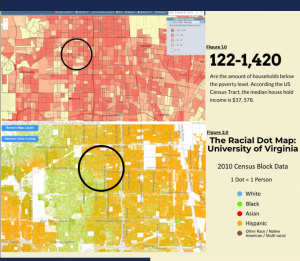

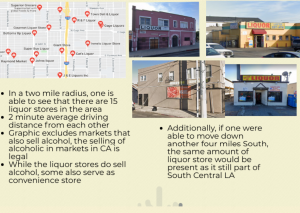

-MAP
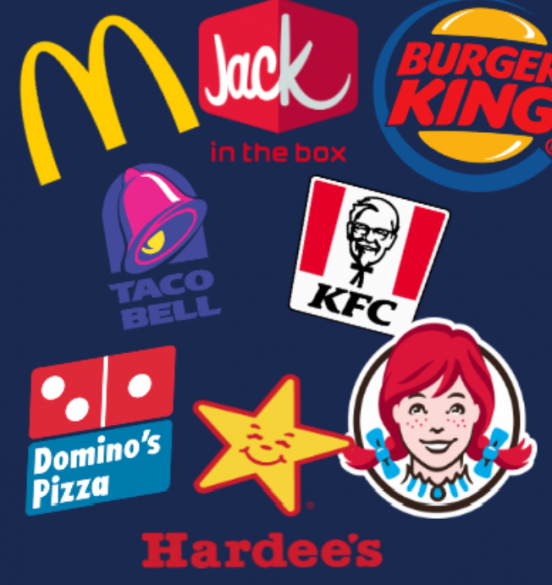

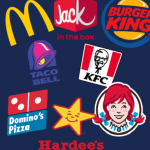
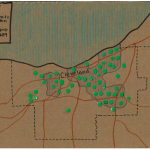

galbanv
May 1, 2020 — 5:35 pm
I liked how you investigated fast-food restaurants as a way to explore unjust sustainabilities in your area. This wasn’t an approach I had thought of before but now I definitely see it, even in my own neighborhoods. I was also shocked at the abundance of liquor stores; the screenshot of the Google map was very impactful. I wonder what sort of impacts these factors have on property values. Do they lower values because there isn’t much else around, or raise them because of the convenience of being so close to such establishments?
pikturne
May 1, 2020 — 5:48 pm
I thought it was really interesting how you mentioned the profit margins of fast food restaurants vs grocery stores; I hadn’t thought about this issue in that way. Should the placement of fast food restaurants be regulated? It really does seem that these restaurants are exploiting these populations, especially because they are more likely to have poor access to nutritional education.
palaciom
May 1, 2020 — 6:12 pm
Yes, I feel like the placements should be regulated but unfortunately I don’t think they ever will.
ketchumt
May 1, 2020 — 5:51 pm
This is a very interesting topic as it is one that I had not thought of before. It is a little crazy looking at your maps and really being able to see the abundance of liquor and fast-food restaurants in your area. It is also saddening to see how the people in these areas are put at such a disadvantage when it comes to access to fresh and healthier foods. I am wondering what first steps we could take to change this and if you may have thought of any during your research?
palaciom
May 1, 2020 — 6:16 pm
In my research I have found that there is a movement starting of affordable organic products that want to help foster better lifestyles. I feel like this can be a good route as the amount of grocery stores are limlited. One of these pages is @supr.mrkt on Instagram.
Natalie
May 1, 2020 — 5:54 pm
This is an interesting topic to study, and I like how you incorporated our readings on the difficulties of grocery stores trying to invest in lower income neighborhoods. I wonder if there are “fast food” chains that could provide meals that are healthier and fresher at low cost, or if this is impossible.